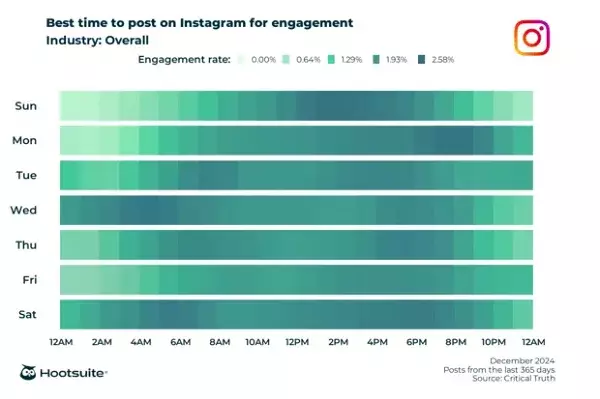Navigating the seemingly endless landscape of social media can be daunting, especially when it comes to determining the best times to post. On the surface, the task may appear simple—just find the optimal hours and watch the engagement soar. However, the reality is far more complex. The timing of your posts isn’t dictated solely by numbers or trends; it’s deeply intertwined with the makeup of your target audience, the region you’re operating in, and the nature of your content. Therefore, while generalized data can provide helpful insights, one must be cautious not to rely too heavily on them.
Social media operates on a dynamic rhythm that reflects the behaviors of its users. Understanding these patterns is akin to decoding a multifaceted puzzle, with different pieces representing the various factors at play. Timing is not universal; instead, it’s a dance you’ll learn through trial and error, experimentation, and keen observation.
Insights from Data Trends
To shed light on this intricate web, Hootsuite recently examined over a million posts to identify the best times for sharing content across major social platforms. While these findings should not be taken as gospel, they do offer a tantalizing starting point for strategic planning. Insights gleaned from such comprehensive research can resonate far beyond general metrics, stimulating tailored strategies that account for the peculiarities of individual businesses.
For instance, Instagram captures users when they’re most likely seeking entertainment or engagement. According to Hootsuite, posting between 3 PM and 9 PM on Mondays tends to generate significant reactions—timeframes that correlate with after-work commuting or winding down periods. This indicates that Instagram serves as a respite from the day’s toil. Similarly, early mornings on Tuesdays may attract attention as users scroll through their feeds over breakfast. Both instances highlight the inverse relationship between working hours and social engagement: when people descend into their routines, their online interactions often dwindle.
Facebook’s Quiet Advantage
Facebook’s best posting times tell another story, revealing that weekdays from 4 AM to 6 AM can yield impressive engagement. While one might question the logic behind early morning posts, the rewards are potentially substantial. With fewer competitors flooding the feed during these hours, the opportunity for visibility amplifies. This raises an interesting challenge—does encouraging brands to post during these optimal times risk saturating the landscape, thus diminishing their effectiveness? Perhaps finding uncharted hours could unlock an even wider audience.
Furthermore, as more users flood the platform, the essence of competition could shift. This serves as a reminder that while data offers guidelines, adaptability is essential. Testing various posting times, particularly during less popular hours, can serve as an invaluable strategy in the quest for deeper engagements.
LinkedIn: The Professional Playground
Turning our attention to LinkedIn, the best predators of engagement are Tuesday mornings, Thursday evenings, and early Friday mornings. Naturally, one would expect such a platform’s peak interaction times to align with the professional workweek. Analysts and marketers could greatly benefit by exploiting these timeframes to reach other professionals and decision-makers.
Then, we venture into the ever-evolving ecosystem of TikTok and Threads, where timing takes on new dimensions. TikTok thrives on afternoon engagement, a stark contrast to other platforms. This variance suggests that users on TikTok engage more playfully when the sun is overhead, perhaps producing a more relaxed and carefree mindset conducive to scrolling through entertaining short videos.
The Takeaway: More Than Just Timing
While Hootsuite’s findings are illuminating, it’s crucial to emphasize that they serve as a reference point, not an absolute rule. Social media engagement is a fluid entity, marked by changes in viewer habits and preferences. For marketers and creators alike, the true challenge lies not just in identifying the “best” time to post but in fostering meaningful connections through content that resonates with your audience.
In the end, understanding your unique audience and staying seated at the intersection of data analysis and creative adaptability will be your best allies in maximizing engagement across all social platforms.

